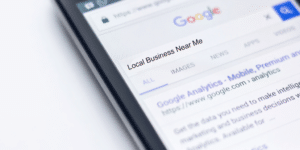Trying to get your head around Local Services Ads so you can decide whether they’re a good fit for your business? You’ve come to the right place!
Google is constantly updating its advertising platform making it difficult to stay up-to-date on which ad types are going to work best for your company. Below, we’ve detailed what you can expect from Local Services Ads, the benefits of using this tool, and recent changes Google has introduced.
What Exactly are Local Services Ads?
Local Services Ads (LSAs) appear on normal SERPs on all types of devices (mobile, desktop, and tablet, including voice search). What makes them particularly of interest for small and medium sized businesses is that instead of being pay-per-click, they’re actually pay-per-lead. You’ll even be able to bid on leads instead of paying for clicks that fail to generate conversions.
Another novel feature of these ads is they rank based on the ratings of reviewers and the location’s proximity to the searcher. Plus, businesses are required to become Google Guaranteed to take part in this program, meaning they must undergo background checks, license verification, and get insured. This makes clicking on the ads an extremely convenient and trusted option for users, reducing friction within the purchase journey.
Why Should I Get Excited about Local Services Ads?
Since businesses only pay for actual leads, these ads are quite cost-effective and, in general, are relatively inexpensive compared to traditional PPC ads, including click-to-call versions. As a result, small and medium sized businesses can compete with those that have a bigger budget to play with.
It’s also important to note that customer experience is a huge ranking factor with LSAs. In effect, LSAs are helping level the playing field, allowing companies to compete based on factors other than their spending capabilities.
While proximity and reviews are two huge elements in LSAs, you won’t win these ads without having an excellent response rate. Responding to both leads and reviews in a timely manner will ensure your business continues to stay competitive with other companies in your area.
How Have Local Services Ads Changed Over Time?
Google has introduced a few new features and updates to LSAs since they first launched. For example, there is now a shortened 30-day window to review and dispute charges for leads. Anytime you notice evidence of an invalid lead, be sure to take immediate action to ensure those charges are credited back to your account.
In addition, Google now charges for message leads in addition to phone leads. This helps take advantage of the fact that many consumers find written communication to be more convenient than phone calls when researching the products and services of local businesses. In turn, this feature increases the usability of LSAs as providers won’t miss out on leads when they’re unavailable for phone calls.
LSAs have also become more convenient for customers and providers alike thanks to a recent feature facilitating direct bookings. Booking leads are priced the same as phone leads. Not only do they give your business the chance to sidestep commission-based booking sites, but they also help make your Google My Business profile more robust by encouraging reviews.
Finally, there’s a new bidding system available for providers who want to pay more for their business details to appear at the top of search pages. With this auction-based pricing system, you can use a manual bidding option to set a maximum amount per lead or have Google automatically set a bid for you.
Thanks to Google’s Local Services Ads, you can now connect with potential customers while making the most of your marketing budget. Instead of being stuck in pay-per-click mode, you’ll have the flexibility to compete based on the experience you provide for your customers and your willingness to be responsive to their needs.

